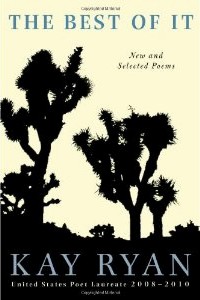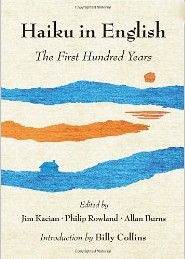Genjuan Haibun Contest Decorated Works 2012-2014
(compiled by Nobuyuki Yuasa and Stephen Henry Gill)
reviewed by J. Zimmerman
Genjuan Haibun Contest Decorated Works 2012-2014
(compiled by Nobuyuki Yuasa and Stephen Henry Gill)
reviewed by J. Zimmerman,
Coordinator of the 2013 and 2014 Tokutomi Memorial Haiku Contests.
First published in hard-copy: Frogpond, 38: 3, Autumn 2015.
Prolog
A review of
Genjuan Haibun Contest Decorated Works 2012-2014
compiled by Nobuyuki Yuasa and Stephen Henry Gill.
Osaka, Japan: Hailstone Haiku Circle Publications, March 2015, 122 pages, 17 illustrations,
perfect softbound, 5.75 x 8.25. ISBN: 978-4-9900822-7-7.
1,000 yen in Japan; $13 cash (includes package and airmail) from elsewhere.
Request from Hailstone Haiku Circle Publications, c/o Hisashi Miyazaki, 54-16 Hamuro-cho,
Takatsuki-shi, Osaka-fu 569-1147, Japan. Email: kamechany8 at yahoo dot co dot jp
To read online the results and best pieces for the most recent contest,
and to see the guidelines for the next contest as well as information on publications,
go to the Icebox website:
https://hailhaiku.wordpress.com .
Review
Genjuan Haibun Contest Decorated Works 2012-2014 is a landmark anthology that includes
the prize-winning haibun for the first three years of the Genjuan International Haibun Contest,
the only international haibun contest held in Japan. This anthology contains twenty-nine of
the selected haibun, together with invaluable comments of the contest judges. It also includes
four classical Japanese haibun, a haibun by each judge, and seventeen illustrations.
Any haibun writer wanting to learn about international haibun, especially if they intend to enter
the contest, should read these excellent haibun and the gifted tutorials on what the judges desire to see.
This annual contest began life in 2009 with a different title: the Kikakuza International Haibun Contest.
In 2012 it changed its sponsorship and correspondingly changed its title to the Genjuan Haibun Contest,
retaining its judges (Nobuyuki Yuasa and Stephen Henry Gill), officer, and rules.
The name Genjuan reflects "the name of the cottage near Lake Biwa where, in 1690, Basho lived for a time.
His residence in this 'Vision-Inhabited Cottage' was probably the happiest period of his life,
and it was there that he wrote his most famous short haibun."
The objectives of the contest, which attracts international participation, are:
|
first, to open a truly international arena for haibun writers all over the world, and second,
to revive the tradition of haibun in Japan, for writers have been neglecting it ever since Shiki
and his followers began to emphasize the importance of independent haiku.
|
Each year a single Grand Prize is awarded to one haibun. Two or three entrants receive
the An (Cottage) Prizes. About half a dozen are given an Honourable Mention.
In 2012 the Grand Prize winner was "Jackdaws" by D.J. Peel (U.K.), a humorous and descriptive work
about interactions between humans and jackdaws. Its third sentence (though I wish it were its first) is:
|
From the dark density of a nearby yew tree comes an incessant racket of clacks and clatterings
as if all the world's fishwives with their sharp tongues and knives were bantering and berating each other
whilst butchering the fish.
|
An (Cottage) Prizes for 2012 were awarded to Kala Ramesh (India), Cara Holman (U.S.A.), and James Norton (Ireland)
while five haibun (from poets in Bhutan, New Zealand, U.K., and U.S.A.) received Honourable Mentions.
Nobuyuki Yuasa commented for the 2012 entrants that:
|
human affairs must coexist with natural descriptions to form a satisfactory piece of haibun. A mere sketching of natural phenomena
tends to be little more than reporting, which is not haibun. On the other hand, subjective accounts of human affairs alone
run the risk of falling into sentimentalism, which is equally dangerous to haibun . . . I believe that Western writers tend
to be centered on human affairs, while haibun by Japanese writers tend to be filled with natural descriptions.
In either case, what is important is the balance between the two.
|
In 2013 the Grand Prize winner was "Towards Burry Holms" (a narrative poem set by the ocean) by Jane Fraser (U.K.).
It ends with this haiku:
conch pressed to your ear.
will you hear me calling you
across the sea's divide?
|
An (Cottage) Prizes for 2013 were awarded to David Cobb (U.K.) and Doris Lynch (U.S.A.), while seven haibun
(from poets in Bulgaria, Japan, New Zealand, U.K., and U.S.A.) received Honourable Mentions.
In 2014 the Grand Prize winner was "Well of Beauty" (a travel and historical reminiscence) by
Margaret Chula (U.S.A.). The final paragraph and haiku of this winning haibun are as follows:
I feel the darkness of Ono no Komachi's heart as I descend the spiral of stones leading to the water in her
Well of Beauty — imagine leeches clinging to her milky white skin, ghost lovers entering the cavity of her heart.
from the mountain forest
I hear the cuckoo's call-
its blood-red tongue
|
Judge Nobuyuki Yuasa commented: "I could not be completely impartial to this haibun because it reminded me
of my own visit to this temple [Zuishin-in] years ago."
Stephen Henry Gill gave a concise summary of why this haibun is so successful:
|
In Margaret Chula's exemplary haibun, Well of Beauty, the relationship between the prose and the haiku is extremely
well wrought. The piece begins with a rooting in the present moment and place. There follows a famous but
succinctly told story, which is necessary for comprehension of the final poem. The paragraph that refers to the
Hanezu Festival helps to widen the gap between the story and the final verse, adding a little brightness
for effective contrast. Then, back to the present moment and on into the imagination of the author . . . Another break,
and we read the haiku, so assured both in its imagery and in its cadence.
|
Prefacing those comments, Gill observed:
|
One point, however, came up several times during the judging process: it is generally better not to describe too fully in a haibun.
Many pieces were written captivatingly, even brilliantly, but perhaps rather too comprehensively, as if no detail was going
to be allowed to slip away. We were looking for gaps or leaps in the narrative in which the reader's imagination could go to work.
|
The comments of the 2014-appointed third judge, Hisashi Miyazaki included:
|
Chula's prose elegantly tells this story [of Ono no Komachi], mixing past and present states of the well [at temple Zuishin-in]
with her own deep emotion, finishing with an excellent haiku. The gap she has left between the end of the prose
and the subsequent haiku poem is quite effective: neither is the poem too close nor too far in feel from the prose.
|
An (Cottage) Prizes in 2014 were awarded to Sonam Chhoki (Bhutan), Margaret Dornaus (U.S.A.), and John Parsons (U.K.),
while six haibun (from poets in Australia, Bulgaria, Japan, India, U.K., and U.S.A.) received Honourable Mentions.
The anthology adds four classical Japanese haibun, to give context to the modern haibun. The selections comprise an excerpt from Matsuo Basho's
Saga Diary, Mukai Kyorai's "Record of the House of Fallen Persimmons,"
Yosa Buson's "A Visit to Uji," and Kobayashi Issa's "Haikaiji Temple: an Account of Its Poet-Priest."
Haibun by the three judges close the main portion of the book: Nobuyuki Yuasa's "Wartime Evacuation,",
the three-part "A Visit to Ghandrung" by Gill (writing as 'Tito'), and Hisashi Miyazaki's "Scarecrow."
Each shows by example how to link the haiku to the prose delicately.
Gill completes the book with his "Postscript" written in Kyoto:
|
all three of us [judges] feel that there is still an enormous amount of work to be done, both here [Japan] and in the West,
in order for haibun to begin to find its place in English literature and to re-establish its credentials in the land of its birth
. . . Life is full of small wonders . . . and we need their stories told.
|
The book is beautifully presented on pale ivory paper. It is enriched with seventeen illustrations, including art
in the classical nanga (or bunjinga, i.e., literati painting) and haiga styles by Buson, Basho, Taiga, and Goshun.
I recommend this illustrated collection of award-winning haibun amply elucidated by experienced judges who have the wisdom and confidence
to mix criticisms that we can learn from with praises that we can celebrate.
End note
To read online the results and best pieces for the most recent contest,
and to see the guidelines for the next contest as well as information on publications,
go to the Icebox website:
https://hailhaiku.wordpress.com .
 [Thanks for visiting.]
[Thanks for visiting.]
 Books of Poetry Form.
Books of Poetry Form.
 How to Write Poetry.
How to Write Poetry.


